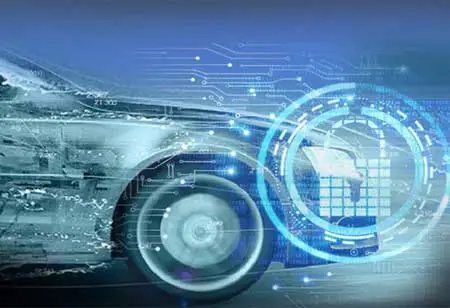THANK YOU FOR SUBSCRIBING
THANK YOU FOR SUBSCRIBING
Be first to read the latest tech news, Industry Leader's Insights, and CIO interviews of medium and large enterprises exclusively from Auto Tech Outlook

By
Auto Tech Outlook | Wednesday, November 29, 2023
Stay ahead of the industry with exclusive feature stories on the top companies, expert insights and the latest news delivered straight to your inbox. Subscribe today.
Discusses the landscapes of cyber threats on connected vehicles and their solutions and new technologies to protect them from cyber-attacks.
FREMONT, CA: Connected vehicles expand the vulnerability to cyberattacks with intricate electronic systems and wireless connectivity. Leading cybersecurity standards like SAE J3061 and ISO/SAE 21434 offer frameworks and best practices. Key areas encompass network and cloud security, access controls, staff training, penetration testing, and supply chain security. In-vehicle safety features contain intrusion detection, encryption, firewalls, and regular audits.
Original equipment manufacturers (OEMs) collaborate with tech companies, undertake R&D, and adopt cybersecurity roles to combat emerging threats. The automotive industry fosters threat intelligence sharing and invests substantially in cybersecurity R&D and talent to safeguard connected vehicles. Automobiles offer a wide attack surface because of increased car connectivity via WiFi, Bluetooth, cellular networks, and V2X communications. Cybercriminals can take control of safety-critical systems like the brakes and steering by taking advantage of vulnerabilities.
Landscape of Connected Car Cyber Threats
Modern vehicles are intricate machines with over 100 million lines of code spread across 70-100 electronic control units (ECUs) that govern a wide range of functions, from infotainment to critical drivetrain and chassis systems. This extensive web of electronic control units, combined with wireless connectivity, has introduced a concerning new risk in the form of automotive cyberattacks. Potential attack vectors are numerous:
Telematics Systems: Always-on cellular or satellite connections in many vehicles can be gateways for hackers to access internal vehicle networks.
Bluetooth/WiFi: Proximity wireless protocols, like Bluetooth and WiFi, used for device synchronisation and over-the-air updates, can be exploited through man-in-the-middle and spoofing techniques.
OBD-II Port: The onboard diagnostics (OBD-II) port provides direct access to internal vehicle networks, allowing malware or hacking devices to seize control of critical ECUs.
Fleet Management Systems: Connected fleet vehicles present attractive targets for cybercriminals. Hacking the fleet management server can infiltrate multiple vehicles at once.
V2X Communications: Emerging vehicle-to-vehicle (V2V) and vehicle-to-infrastructure (V2I) networks are expanding the attack surface, potentially enabling traffic infrastructure manipulation, vehicle tracking, and fleet-wide attacks.
Automotive Cybersecurity Solutions and Technologies
To safeguard connected vehicles, a range of cybersecurity solutions has emerged, spanning various categories:
In-vehicle Security includes intrusion detection systems for monitoring network activity, encryption for onboard communications, firewalls to segregate safety-critical systems and prevent attacks, and regular security audits of electronic control unit (ECU) firmware code.
Telematics and Infotainment Security solutions involve application sandboxing to isolate entertainment apps, secure over-the-air update mechanisms, antivirus software for malware detection, and stringent input validation for external interfaces such as USB ports.
Network Security measures consist of VPNs, proxies, and gateways to secure external connections, anomaly-based network monitoring for attack detection, edge security gateways to filter traffic, and network segmentation with access controls between vehicle domains.
Cloud and Backend Security focuses on hardened cloud servers for telematics and infotainment, multi-factor authentication for remote access, security information and event management (SIEM) tools for event analysis and regular penetration testing of back-end systems.
Identity and Access Management solutions include role-based access controls, certificate-based device authentication for vehicle-to-everything (V2X) systems and biometric driver authentication for privileged function access.
Incident Response encompasses forensic capabilities for investigating cyber attacks, event logging, network activity recording, and the development of cybersecurity kill switches to disable systems gracefully. Employing a layered defence-in-depth strategy, combining policies, technologies, and processes, automakers can effectively manage cyber risks and secure connected vehicles throughout their entire lifecycle.
Embracing a proactive approach to automotive cybersecurity is pivotal for the industry to guarantee safety and reliability as connected vehicle technology advances. The ongoing collaborative efforts are the building blocks for unlocking the extensive advantages of a smarter and more autonomous transportation landscape in the near future.
 Copyright © 2025 AutoTech Outlook. All Rights Reserved | Privacy Policy | Subscribe | Sitemap | About us | Feedback Policy | Editorial Policy
Copyright © 2025 AutoTech Outlook. All Rights Reserved | Privacy Policy | Subscribe | Sitemap | About us | Feedback Policy | Editorial Policy 



